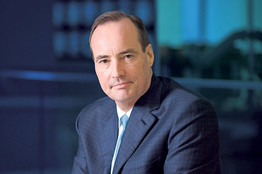Ep. 103 Harry Dent on the Coming Financial Crash

Harry Dent is the founder of Dent Research, which provides economic forecasting and financial recommendations. He is the author of numerous books, including Zero Hour (2017). Harry argues that demographic trends set the U.S. economy up for a major adjustment that the Federal Reserve merely postponed with its easy-money policies in 2008 and beyond. Harry now believes that a major crash is coming, which will probably begin this year.
Mentioned in the Episode and Other Links of Interest:
- The YouTube video of this interview.
- Harry Dent’s website, HarryDent.com.
- Help support the Bob Murphy Show.
The audio production for this episode was provided by Podsworth Media.

Hahahaha this episode was a funny one. He does tell a good story.
This, at least for me, was the most incomprehensible episode from the beginning.
Could you, Bob, make a solo episode, where you unpack all this super dense content?
Marko I don’t know what to tell you; his claims seemed understandable to me. If you want more on his views, just go to his website (http://www.HarryDent.com).
Do you think this timeline is credible and where do you and Harry Dent differ in your expectations? Thanks for putting out all the great content 🙂
I first came across Harry Dent back in 2011. I was impressed by his demographic based forecasts. At the time he was claiming the Dow would be less than 6000 within two years. I came to realize he’s a perpetual doom-monger. Eventually he’ll be right, and he’ll turn around and say he was pinpoint accurate. Needless to say, I don’t have much respect for Dent – Steve
It seems the episode start the correction the began the next day. What time was it published?
I’m not sure if this is what you’re asking, but my interview with Harry Dent was actually recorded about two weeks before I posted it. Because the interviews take time to edit etc., I usually have 2 – 3 of them “in the can” at any time, and it takes time to post.
Bob,
I know you are a bigwig and everything so I hope you’ll answer a question from a little person like me.
The Dow was down over 2,000 today alone.
Are we finally seeing the beginning of a very sever and protracted bear market?
And what’s going to happen to the state and local pensions? Even at the top of this crazy market they were incredibly underfunded. They assume a discount rate around 7%. So what happens if we get a deep bear market where it takes more than a decade or more to get back to where the market is today?
Seems like these pensions are toast and the fed will bail them out? What say you?
– The economic metrics/data in 1920/1921 was indeed worse than in say 2010, except for one metric: Debt !!!! In 1920/1921 the US Debt-to-GDP ratio was MUCH MUCH lower than in say 2008, and now and lower than in 1933.
– We saw that from 1865 (end of the american civil war) in the US the Debt-to-GDP ratio kept rising and rising and peaked in 1914. From 1914 to 1918/1919 the Debt-to-GDP actually FELL dramatically (think: War production, World War I). But from say 1920 onwards this ratio started to rise again and peaked in 1933. In say 1922/1923 this ratio was as high as the previous peak in this ratio in 1914 but kept rising higher and higher until 1933.
https://www.mauldineconomics.com/outsidethebox/hoisington-quarterly-review-and-outlook2/
– Harry Dent is wrong. When you want to have PRICE inflation (like in the 1960s and 1970s) then you must increase wages AT or ABOVE the rate of PRICE inflation. But from say 1980 onwards US employees/workers received wage increases AT or BELOW (Price) inflation. When workers/employees receive a wage increase BELOW then they are forced to go deeper and deeper into debt to maintain their spending at the same level. And that’s precisely what happened from 1980 onwards.
– Central Banks DO NOT set rates, they follow what a person called “Mr. Market” says interest rates should be. And that was also the case between in 2001, 2002 and 2003.
– Why was there a housing bubble between say 1995 and 2006 ? Answer: Demographic developments !!! (Source: Harry Dent). The US had (like many other countries) a Baby Boom from 1945 onwards and this baby boom peaked in 1961. I.e. For a long, long time the amount of US citizens with the year of birth 1961 was the largest group in the US population.
– It turns out that the people in the age group 35 to 42 move the most to a larger house (Source: Harry Dent). So, the largest demand for larger houses was (according to Dent) between 1996 (= 1961 + 35) and 2003 (= 1961 + 42). When was the housing bubble in the US ? Between 1994 and 2006. It’s NOT a 100% perfect match but it’s close enough to make Dent’s prediction credible.
– Suggestion: Ask Australia born economist Steve Keen to a guest on your show. He has done extensive work on the dynamics of debt. He was the one who came up with the chart of the US Debt-to-GDP ratio as mentioned above. Keen also wrote a book in 2015(/2016 ??) called “Can we avoid a crisis ?”.
http://www.profstevekeen.com/
https://www.incrediblecharts.com/economy/keen_debt_gdp.php
https://en.wikipedia.org/wiki/Steve_Keen
Steve Keen also has published multiple videos on YouTube. check it out !!!!
– There is another reason why the US went through a housing bubble: lack of regulation. Tom Woods has done the research and thinks that the federal government spent A LOT OF money on regulation and in spite of that there was a housing bubble. He is both right AND wrong.
– The FBI does have a mandate to oversee the financial sector and the banks. And it employs agents who are specialized in socalled “white collar crime” (e.g. mortgage fraud). But some 500 of these FBI agents were, after the attacks on 9/11, given a different task. They had to hunt down money used by the socalled “terrorists” instead. But the FBI didn’t hire 500 new “white collar crime” specialists to replace the other 500 FBI agents. So, the regulation/oversight for mortgage fraud was effectively gutted. And then it’s no surprise that there was extensive fraud when it came to the issueance of mortgages.
– Even CNN reported in 2004 that there was “epidemic mortgage fraud”. But I assume that the people in the Bush administration didn’t want to listen.
https://edition.cnn.com/2004/LAW/09/17/mortgage.fraud/
– There is a person called Bill Black – who was a regulator in the 1980s in the S&L debacle – who gave a very revealing interview to Bill Moyers in 2009. This is a MUST WATCH video. The video will shatter a number of your (austrian school) thoughts.
https://www.youtube.com/watch?v=Rz1b__MdtHY